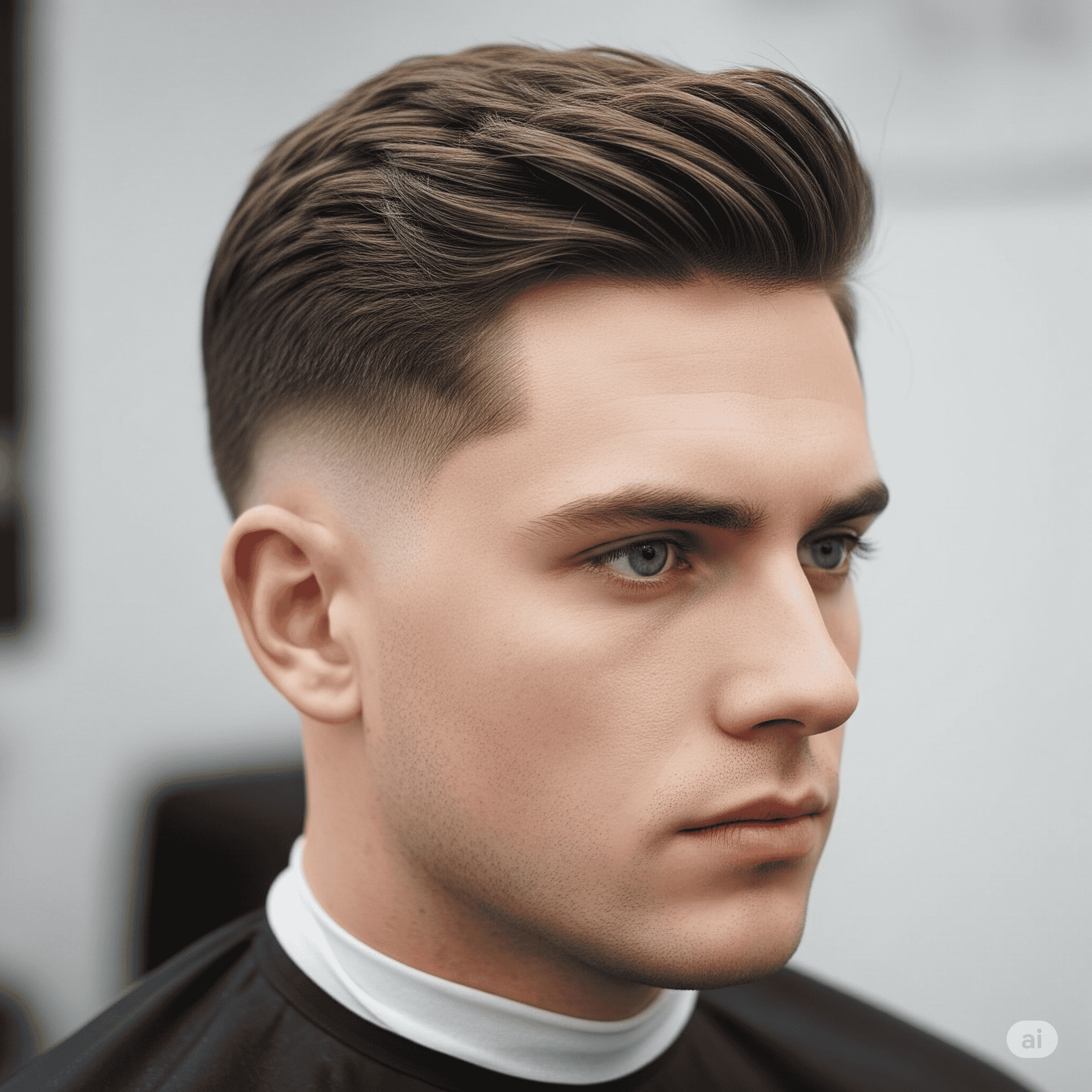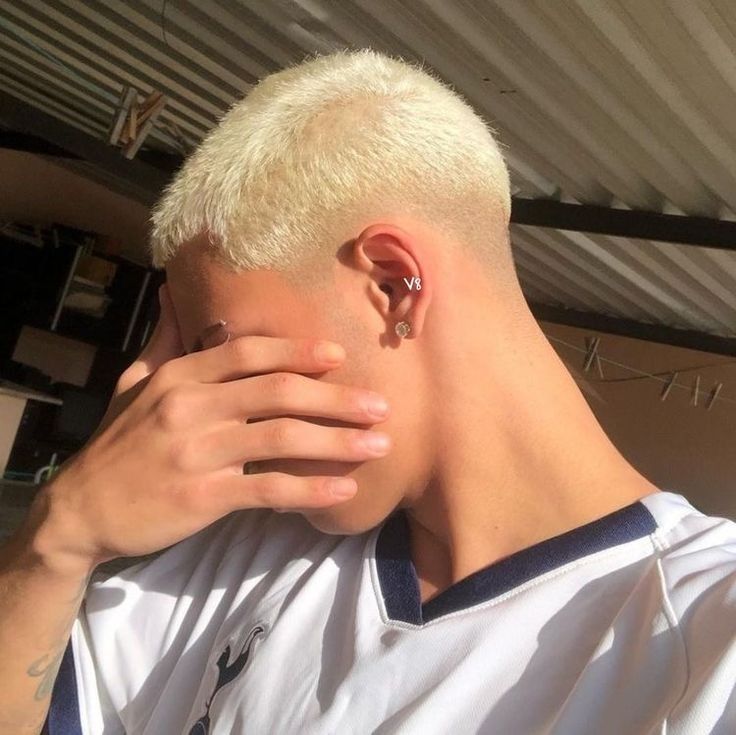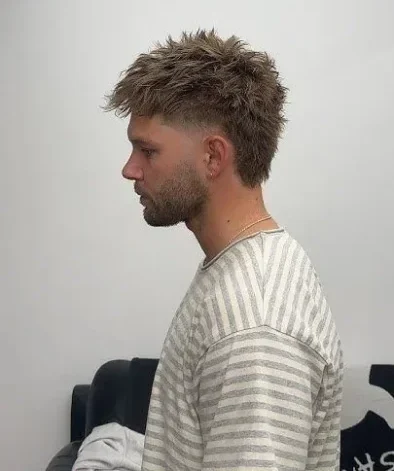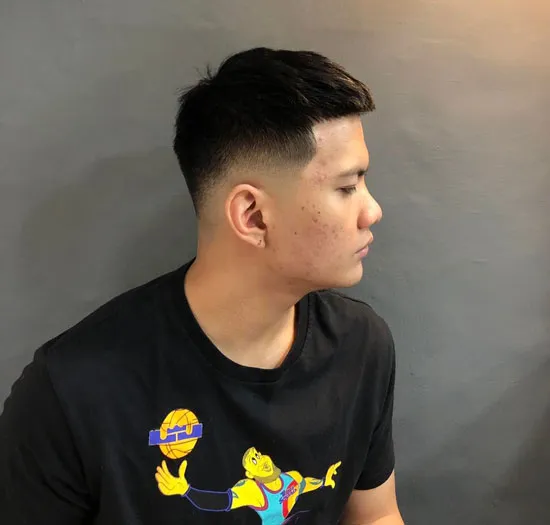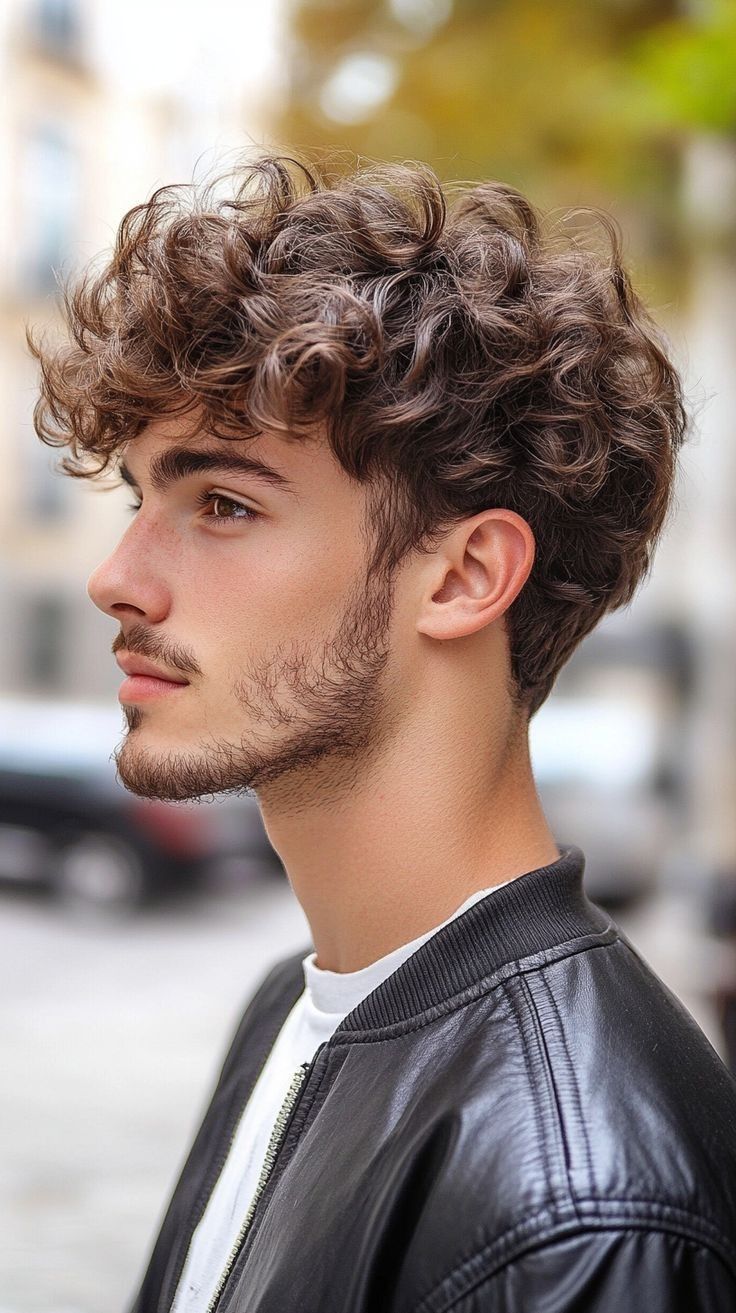🔥 Mid Fade Haircut for Men: Styles, Types & Expert Tips
A mid fade haircut starts around the temples or above the ears, gradually blending down the sides while keeping length on top, offering a clean, balanced style. The mid fade haircut is one of the most popular men’s hairstyles today, blending sharpness and versatility effortlessly. As a barber with years of experience, I’ve seen how this cut can transform a look, whether you want something professional, edgy, or somewhere in between.
A mid fade starts tapering around the temples and gradually fades down to the skin or a very short length near the middle of the sides and back. Unlike a low fade (which starts lower near the ears) or a high fade (which begins near the parietal ridge), the mid fade strikes the perfect balance—clean yet bold.
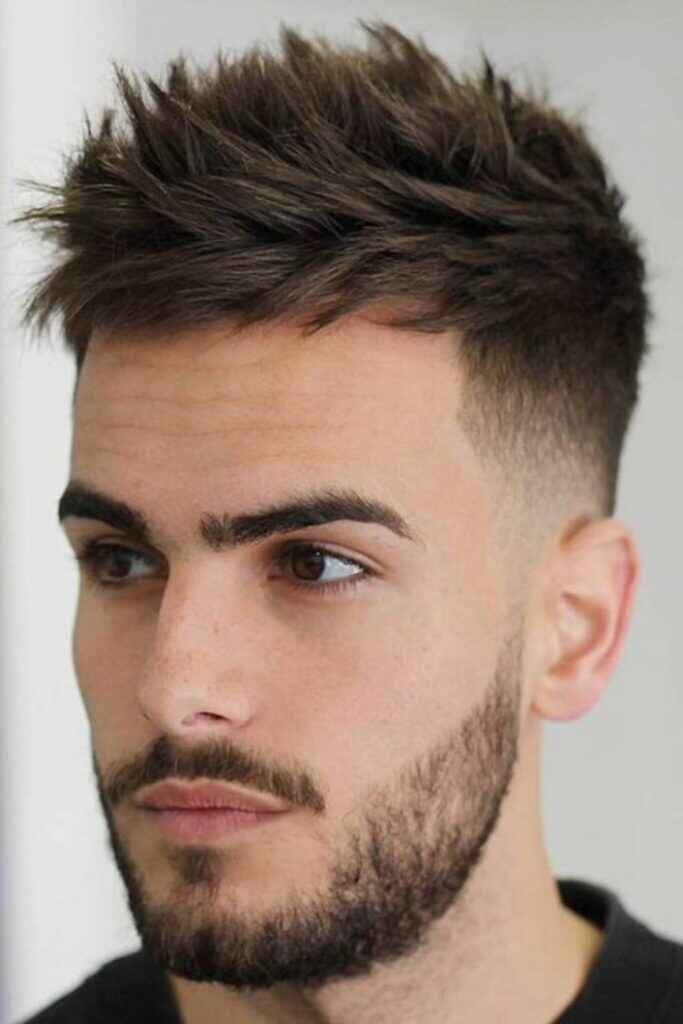
Types of Mid Fade Haircuts You Should Consider
Not all mid-fades are the same. Depending on your hair type, face shape, and personal style, you can choose from these variations:
1. Classic Mid Fade
- Description: The standard mid-fade features a gradual taper that starts at the middle of the head, blending longer hair on top into shorter sides and back. The fade is smooth and even, without extreme contrasts.
- Styling: The top can be styled in various ways, such as slicked back, side-parted, or left messy. It’s often paired with a medium-length top (2–4 inches) for versatility.
- Best For: Professional settings, all hair types (straight, wavy, or curly), and those seeking a clean, timeless look.
- Maintenance: Requires trims every 2–3 weeks to maintain the fade’s shape. Use pomade or wax for styling the top.
- Face Shape Suitability: Oval, square, and round faces, as they balance proportions without being too aggressive.

2. Mid Taper Fade
- Description: A subtler version of the mid fade, the mid taper fade keeps more length on the sides and back, with a less dramatic transition from top to bottom. The fade doesn’t go as short as a skin fade, maintaining a softer, more gradual gradient.
- Styling: Often paired with a side part, comb-over, or textured top. The longer sides give it a polished, less edgy appearance.
- Best For: Conservative environments, first-time fade wearers, or those wanting a low-maintenance fade.
- Maintenance: Trims every 3–4 weeks. Styling products like light hold gel or cream work well for a natural finish.
- Face Shape Suitability: Oval and oblong faces, as it adds width without overly sharpening features.
3. Mid Skin Fade (Mid Bald Fade)
- Description: The fade transitions down to the skin (completely shaved) at the bottom, starting from the midsection of the head. This creates a high-contrast, sharp look with a clean finish.
- Styling: The top can be styled with volume (e.g., quiff or pompadour) or kept short for a minimalist look. The skin fade emphasizes the top’s texture.
- Best For: Bold, modern styles, especially for those with thick or textured hair (curly or coily).
- Maintenance: Frequent trims (every 1–2 weeks) to keep the skin fade crisp. Use a stronghold product for structured tops or leave natural for textured looks.
- Face Shape Suitability: Square and diamond faces are well-suited, as the contrast highlights strong jawlines.

4. Mid Drop Fade
- Description: The fade starts at the midsection but “drops” in a curved arc behind the ears, creating a distinctive, semi-circular taper. This adds a unique flair compared to the straight line of a classic fade.
- Styling: Often paired with textured crops, curly tops, or mohawks. The drop shape enhances the back profile, making it stand out.
- Best For: Trendy, creative individuals or those with curly/wavy hair wanting to highlight texture.
- Maintenance: Trims every 2–3 weeks to maintain the drop shape. Styling depends on the top—use mousse for curls or pomade for slick styles.
- Face Shape Suitability: Round and heart-shaped faces benefit from the drop, as it adds dimension to the back.

5. Mid Burst Fade
- Description: The fade radiates outward in a circular or “burst” pattern around the ears, creating a focal point at the sides. It’s less common but striking, often used with mohawks or curly tops.
- Styling: The top is typically left longer and styled forward, backward, or spiked. The burst effect draws attention to the sides.
- Best For: Bold, edgy looks, especially for curly or coily hair. Popular in urban and streetwear-inspired styles.
- Maintenance: Requires precise trims every 2 weeks to maintain the burst shape. Use curl enhancers or pomade for styling.
- Face Shape Suitability: Oval and square faces benefit from the burst, as it adds width to narrower profiles.

6. Mid Fade with Design
- Description: The mid fade serves as a canvas for shaved patterns, lines, or intricate designs (e.g., zigzags, stars, or geometric shapes) on the sides or back. The fade itself remains standard, but the designs add a personal touch.
- Styling: The top can be styled in any way (e.g., crop, curls, or pompadour), with the design being the focal point. Barbers use clippers to create the artwork.
- Best For: Creative individuals, younger men, or those wanting a unique, artistic haircut.
- Maintenance: Designs grow out quickly, so trims every 1–2 weeks are needed. Styling depends on the top’s style.
- Face Shape Suitability: All face shapes, as the design can be tailored to complement features.
7. Mid Fade Comb Over
- Description: A mid fade paired with a longer top that’s combed to one side, creating a sleek, polished look. The fade adds sharpness while the comb-over adds sophistication.
- Styling: Use a comb and medium-to-high hold pomade for a smooth, structured finish. Can be parted deeply or subtly.
- Best For: Professional or formal settings, straight or wavy hair, and those seeking a refined style.
- Maintenance: Trims every 2–3 weeks. Daily styling with a blow dryer and product is recommended.
- Face Shape Suitability: Oval, square, and oblong faces, as the side part balances proportions.

8. Mid Fade with Textured Crop
- Description: A modern style combining a mid fade with a short, textured top that’s often styled forward or slightly messy. The texture adds volume and movement.
- Styling: Use a texturizing powder or matte clay for a natural, tousled look. It can be styled forward or slightly to the side.
- Best For: Trendy, casual looks, especially for straight or wavy hair. Popular among younger men.
- Maintenance: Trims every 2–3 weeks. Minimal styling time with the right product.
- Face Shape Suitability: Round and oval faces are well-suited, as the texture adds height and balances the width.

9. Mid Fade with Pompadour
- Description: A bold style where the mid fade complements a voluminous, swept-back top styled into a pompadour. The fade keeps the sides clean, emphasizing the top’s height.
- Styling: Requires blow-drying and strong-hold pomade to achieve the voluminous, lifted look. Can be classic (smooth) or modern (textured).
- Best For: Retro-inspired or statement-making looks, ideal for straight or thick hair.
- Maintenance: Trims every 2–3 weeks. Daily styling with heat and product is necessary.
- Face Shape Suitability: Oval and square faces are well-suited, as the height of the face is elongated.
10. Mid Fade with Curly Top
- Description: The mid fade contrasts with a longer, curly top, highlighting the natural texture of curls or coils. The fade keeps the sides tidy, allowing the curls to be the focal point.
- Styling: Use curl-enhancing creams or mousse to define and enhance your curls. Can be left loose or styled forward/backward.
- Best for: Men with naturally curly or coily hair who want a low-maintenance yet stylish look.
- Maintenance: Trims every 2–3 weeks to maintain the fade. Use regular moisturizing products to keep curls healthy.
- Face Shape Suitability: All face shapes are suitable, as curls add volume and can be styled to suit individual features.

11. Mid Fade Buzz Cut
- Description: A mid fade buzz cut combines a mid fade with a very short, uniform buzz cut on top (typically clipped to a #1–#3 guard, about 1/8 to 3/8 inch). The fade starts at the midsection, creating a clean transition from the buzzed top to shorter sides.
- Styling: Minimal styling required due to the short length. Can apply a light styling cream for shine or leave it natural.
- Best For: Low-maintenance looks, athletic or military-inspired styles, and men with straight or coarse hair. Ideal for those wanting a rugged, clean appearance.
- Maintenance: Trims every 1–2 weeks to maintain the fade and top length. No daily styling needed.
- Face Shape Suitability: Square and oval faces, as the short length highlights strong facial features.

12. Mid Fade for Black Men
- Description: A mid fade tailored for Black men, often emphasizing the natural texture of curly or coily hair. The fade starts at the midsection, creating contrast with a longer top that showcases curls, coils, or defined waves. Variations include temple fades or burst fades for added flair.
- Styling: The top can be left natural to highlight curls/coils, styled with a sponge for defined curls, or shaped into a flat top. Use curl-enhancing creams or oils for moisture and definition.
- Best For: Curly, coily, or kinky hair types. Popular in urban and cultural styles, often seen with line-ups or sharp edges.
- Maintenance: Trims every 1–2 weeks for crisp edges and fade. Regular moisturizing and curl care are crucial for maintaining the hair’s health.
- Face Shape Suitability: All face shapes, especially oval and square, are suitable, as the textured top adds volume and balances features.

13. Mid Fade Slick Back
- Description: A mid fade paired with a longer top (3–5 inches) slicked back for a sleek, polished look. The fade starts at the midsection, keeping the sides clean and emphasizing the smooth top.
- Styling: Use a blow dryer and strong-hold pomade or gel to slick the hair back. It can be styled with either a tight or slightly voluminous look.
- Best For: Professional or formal settings, straight or wavy hair, and those seeking a classic, refined style.
- Maintenance: Trims every 2–3 weeks. Daily styling with heat and product for a smooth finish.
- Face Shape Suitability: Oval and square faces, as the slicked-back top elongates the face and highlights strong features.
14. Mid Fade Straight Hair
- Description: A mid fade designed for men with straight hair, where the fade starts at the midsection and contrasts with a longer, straight top. The straight hair allows for clean lines and versatile styling options, such as side parts, pompadours, or textured crops.
- Styling: Use pomade for sleek styles (e.g., comb-over, slick back) or matte clay for textured looks. Blow-drying adds volume if desired.
- Best For: Straight hair types, professional or casual settings, and those wanting a clean, structured look.
- Maintenance: Trims every 2–3 weeks. Daily styling depends on the desired finish (sleek or textured).
- Face Shape Suitability: Oval, square, and diamond faces, as straight hair can be shaped to complement features.
15. French Crop Mid Fade
- Description: A mid fade combined with a French crop, where the top is short-to-medium length (1–3 inches), textured, and styled forward with a slight fringe. The mid-fade adds sharpness to the sides, enhancing the crop’s modern appeal.
- Styling: Use matte clay or texturizing powder for a natural, tousled look. Style forward or slightly to the side with fingers or a comb.
- Best For: Trendy, casual looks, especially for straight or wavy hair. Popular among younger men for its low-maintenance style.
- Maintenance: Trims every 2–3 weeks to keep the fade and fringe sharp. Minimal daily styling time.
- Face Shape Suitability: Oval and round faces benefit from a forward fringe, as it adds length and balances proportions.

Final Thoughts
The mid-fade haircut is a timeless choice that strikes a balance between boldness and wearability. Whether you prefer a skin fade for a bold statement or a taper fade for subtlety, this style adapts to your personality.
As someone who has cut and styled countless mid-fades, I can confidently say—it’s a look that rarely disappoints. Ready to try it? Find a skilled barber, bring a reference photo, and enjoy the transformation!

Alax, the mind behind hairecho.com, has spent 13+ years perfecting the art of hairstyling for both men and women. As a skilled barber and stylist, he crafts precise fades, clean cuts, and textured styles for men while creating flattering, versatile women’s cuts that enhance natural hair texture. Alax’s commitment to staying ahead of trends while delivering timeless, confidence-boosting results has made him a trusted figure in the modern grooming and hair community.
